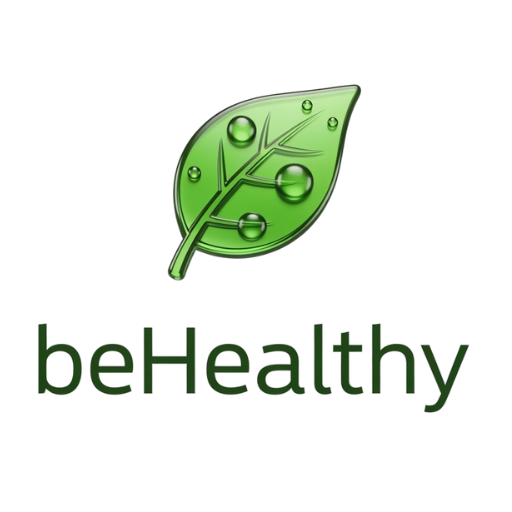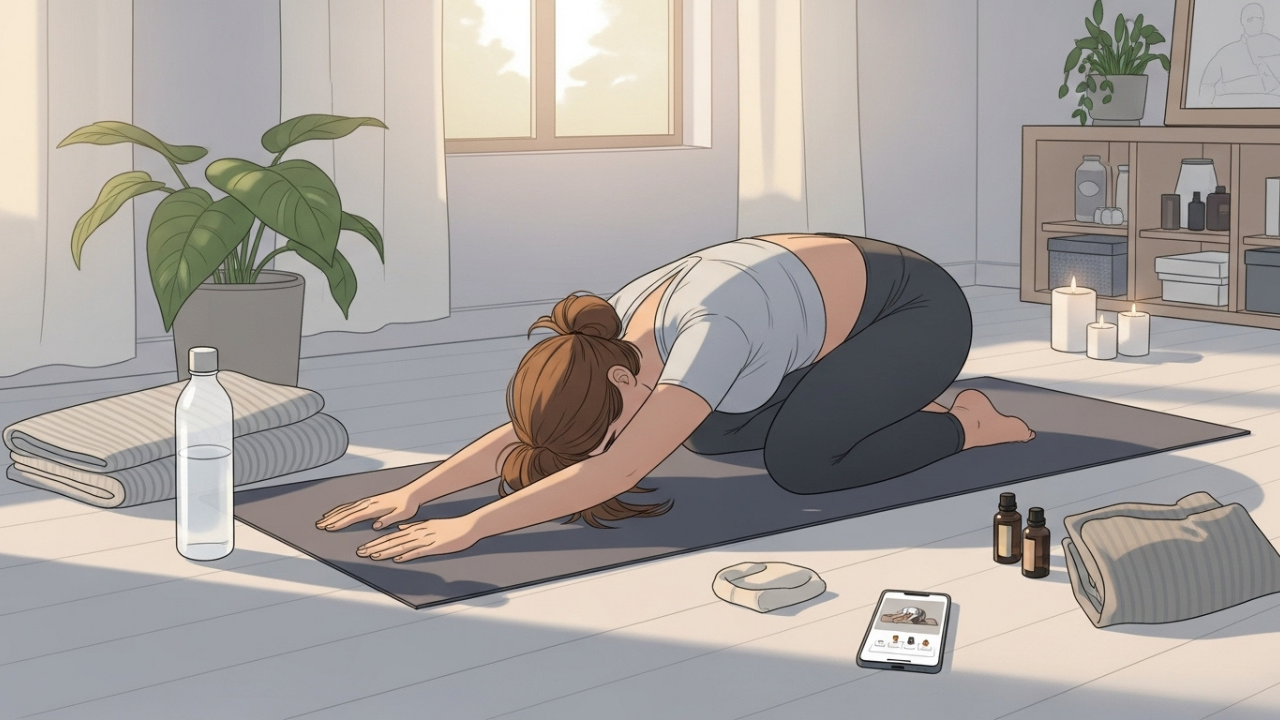The problem of lower back discomfort is one of the most widespread ones in the modern world. Whether it is a nagging pain from too much sitting, a sharp strain from a twist, or a constant stiffness that makes motion difficult — nearly all of us have experienced this.
Though the causes of lower back pain may differ, one of the easiest and most efficient ways to manage it is stretching.
Stretching is not a magic solution, but when used regularly, it can provide long-term benefits. It may help improve posture, relieve tension, reduce stiffness, and even prevent future flare-ups.
Let’s assume you are a beginner in stretching and want to know how it can help — and what simple movements can naturally assist in lower back recovery, without even leaving your home.
Understanding the Lower Back: Why Does It Hurt?
Before you begin stretching, it helps to understand why your lower back might be hurting. The lumbar region, or lower back, bears a significant portion of your body’s weight. It is actively involved in everyday movements: walking, sitting, bending, lifting, and even just standing still.
When the muscles in this region become weak, tight, or imbalanced, they struggle to support the spine effectively. Add poor posture, inactivity, or improper lifting to the mix, and pain is almost inevitable.
Common causes include:
Old injuries, spinal conditions, or lack of mobility
Prolonged sitting without proper back support
Poor posture while using a computer or phone
Weak core muscles failing to support the spine
Tight hamstrings or hip muscles pulling on the lower spine
Is It Safe To Stretch With Back Pain?
This is a fair concern. Not all back pain is created equal, and it’s important to listen to your body. Stretching is safe and even encouraged for mild to moderate muscular pain or stiffness — especially when it feels better after gentle movement.
However, if you have numbness in the legs, loss of bladder control, or intense shooting pain down one side (possible signs of sciatica or herniated disc), it’s crucial to consult a healthcare provider before doing any exercise, even stretches.
In most everyday cases, especially those caused by muscle tightness or lifestyle stress, stretching brings relief — not risk.
The bright side? Stretching promotes blood circulation, lengthens shortened muscles, and gently encourages spinal alignment. It’s often the first line of defense — before medications or invasive treatments — and is particularly effective when done consistently.
The Best Stretches For Lower Back Pain Relief

We are going to consider basic, good stretches that can be executed right in your living room, on a yoga mat, or even in your bed. These movements don’t just focus on the lower back — they also address supporting muscles that contribute to back pain, such as the hips, glutes, and hamstrings.
Instead of just listing the stretches in stiff bullet points, we’ll explore each movement with background and context so you know why it works and how to perform it with care.
Child’s Pose – Gentle Release
This classic yoga asana is deeply relaxing to the spine. It decompresses the lower back — especially helpful if you’ve spent your day standing or sitting for long periods.
- Start by kneeling on the ground.
- Bring your chest toward the ground and extend your arms forward.
- Keep your hips sitting back toward your heels.
- Rest your forehead on the mat and breathe steadily.
The key is to allow gravity to gently pull your spine into stretch — not to force it with muscular effort.
Knee-to-Chest Stretch – Easing Tension
This stretch feels almost instinctive.
- Lie on your back (supine position).
- Gently pull one knee toward your chest.
- Hold for 20–30 seconds.
- Repeat on the other leg or pull both knees in at once.
It offers gentle traction in the lower back and hips, stretching constricted muscles around the lumbar spine. A great way to start or end your day.
Supine Twist – Unlocking the Spine
Rotational movement of the spine is natural and yet often neglected.
- Lie flat on your back.
- Bring one knee across your body while keeping your shoulders grounded.
- Face in the opposite direction of the bent knee.
You’ll feel a light twist in the lower back, possibly extending to the glutes and obliques. This is particularly soothing if your back pain involves stiffness or that “locked” sensation. Always move gently into the twist — never force it.
Cat-Cow – Mobilizing The Spine
The alternation of arching and rounding the spine helps restore mobility and lubricates spinal joints.
- Start on all fours.
- Inhale: lower your belly and lift your chest (Cow Pose).
- Exhale: arch your back, tuck your chin (Cat Pose).
- Repeat slowly and rhythmically.
This flexion doesn’t just ease the spine — it also activates core muscles that help stabilize and protect your back.
Cobra Stretch – Spine Extension
Back pain often arises from excessive forward bending — think hours spent slouched over a desk or phone. The Cobra pose counteracts this by gently extending the spine.
- Lie on your stomach.
- Place your palms beneath your shoulders.
- Slowly lift your chest while keeping your hips on the ground.
- Keep elbows slightly bent and move only as far as is comfortable.
This stretch should feel opening and gentle, never forced or painful.
A Sample Daily Lower Back Stretching Routine
To get the most out of these movements, consistency matters. Here’s a simple 10-minute daily sequence you can follow. This isn’t intense or sweaty — it’s restorative and calm. Ideal in the morning after waking up or in the evening before bed.
| Stretch Name | Duration | Purpose |
|---|---|---|
| Child’s Pose | 1 minute | Releases lumbar pressure |
| Knee-to-Chest | 30 sec each leg | Relieves hip and lower back tension |
| Supine Twist | 30 sec each side | Improves spinal mobility |
| Cat-Cow | 1–2 minutes | Mobilizes spine, reduces stiffness |
| Cobra Stretch | 30–45 seconds | Opens up front of body |
This routine should be repeated once or twice a day to achieve the best results. Work lightly, breathe well, and avoid forcing any movements. Stop immediately if you feel pain — discomfort is normal, pain is not.
What Makes These Stretches So Effective?
You may ask: How can something that is so gentle be of any real relief?
The answer lies in how the body responds to consistent care. These stretches:
- Foster blood circulation through sore or rigid muscles
- Enhance mobility of the joints, especially the spine and hips
- Engage the core stabilizers that support the lower back
- Help release chronic muscle tension and guarding
- Improve body awareness, which helps combat poor posture
To put it simply: these movements don’t just feel good — they lay the foundation for long-term spinal wellness.
The Importance of Breathing and Mindfulness During Stretching
One often-overlooked aspect of stretching is how you breathe during the movement.
- Rapid, shallow breaths create tension
- Slow, deep breathing relaxes your system, lengthens muscles, and improves stretch response
Here’s a simple technique:
- Inhale for 4 seconds
- Exhale slowly for 6 seconds
- As you exhale, imagine letting go of tension in your back
This transforms stretching from a purely physical act into a restorative self-care ritual.
Stretching Beyond The Basics: Going Deeper Safely
Once your body adapts well to the beginner stretches, you can begin to explore deeper stretches — carefully and gradually.
Remember: Intensity is not the goal. Precision, control, and mindfulness are.
These deeper movements are especially effective if you suffer from recurring back pain, or persistent tightness in the hips, glutes, or hamstrings.
Pigeon Pose – Unlocking Hip Tension
Many people with back pain are surprised to learn their hips may be the real culprit. This hip-opening stretch releases tension that contributes to lower back strain.
Breathe slowly and steadily
Begin on your knees
Bring one knee forward, shin angled across the mat
Extend the other leg straight back
Gently fold your torso over the front leg
Use a pillow or yoga block for support under the hips if needed
Sphinx Pose – Gentle Lumbar Strengthener
This is a milder alternative to Cobra Pose — perfect for easing into spinal extension.
- Lie on your stomach
- Prop your upper body up on your forearms
- Keep your elbows beneath your shoulders
- Let your pelvis stay grounded
- Focus on a light lift through the chest
This pose activates the lower back with minimal pressure, ideal for those recovering from stiffness.
Figure Four Stretch – Glutes and Sciatic Relief
This stretch is gentle, effective, and ideal for daily use.
- Lie on your back with knees bent
- Cross one ankle over the opposite thigh to form a “4”
- Reach behind the uncrossed thigh and gently pull toward you
- Breathe deeply and hold
This targets the glute muscles and can be especially helpful in easing sciatic-like discomfort.
When and How Often Should You Stretch?
Stretching is not a quick-fix. It is also a habit, and like any habit, its rewards accumulate over time.
When it comes to managing lower back discomfort, keep in mind:
Do not stretch through pain. Like brushing your teeth to prevent cavities, caring for your back regularly can prevent future pain or injury.
Daily stretching is ideal — even if it’s just 10 minutes.
Morning stretches can help relieve stiffness from the night.
Evening stretches help the body relax after a long workday or physical activity.
Breathe deeply and move slowly — stretching should never be rushed.
Lower Back Health Is a Full-Body Affair

One of the most overlooked facts about lower back pain is that the source of discomfort may not be the back itself.
In many cases, pain originates from tight or weak areas like the hips, core, glutes, or even feet. While stretching the lower back may offer temporary relief, true recovery and resilience come from strengthening and mobilizing supporting muscle groups.
This is why a balanced routine should also include:
- Core stability work: exercises like glute bridges or dead bugs
- Postural corrections: gentle movements such as chin tucks and wall angels
- Hip, thigh, and hamstring mobility: loosening tight areas that pull on the spine
The real gateway to healing is not just in stretching — it’s in combining awareness, mobility, and strength.
Common Stretching Mistakes That Can Make Pain Worse
Stretching should never hurt. Yet many people overdo it in hopes of “pushing through” the pain. That While stretching is therapeutic, improper technique can cause more harm than good. These are some common errors to avoid:
- Jerking or bouncing into a stretch
- Holding your breath or tensing your neck and shoulders
- Overdoing it early on, especially in spinal twists
- Ignoring pain signals in the rush to get results
- Skipping warm-ups — cold muscles are more prone to injury
Tension is okay. Pain is not. If you feel pain, either stop or back off.
The Mind-Body Connection: Stress and Back Pain
Many people are unaware that stress is not just emotional — it’s biological, and it shows up in the body. The lower back is one of the most common places where we store physical tension.
Adding mindfulness to your stretching practice can dramatically increase its benefits. Consider:
- Breathing slowly and deeply with every movement
- Feeling gratitude for the body that moves and supports you
- Using soft music, candles, or calming scents to create a soothing ritual
Taking care of the lower back is not just physical — it’s emotional as well.
Weekly Stretching Plan
To bring everything together, here’s a simple weekly stretching schedule that supports both healing and habit-building:
| Day | Focused Stretch Routine | Notes |
|---|---|---|
| Monday | Child’s Pose, Supine Twist, Cobra | Great to ease into the week |
| Tuesday | Figure Four, Cat-Cow, Pigeon Pose | Loosens hips and glutes |
| Wednesday | Sphinx, Knee-to-Chest, Cat-Cow | Gentle back and core work |
| Thursday | Cobra, Supine Twist, Pigeon Pose | Opens front body and supports rotation |
| Friday | Child’s Pose, Sphinx, Figure Four | Balanced and restorative |
| Saturday | Full flow of all poses | Weekend recovery session (15–20 mins) |
| Sunday | Optional or rest | Listen to your body |
This is dynamic. To the order, length, or number of the poses depend on needs and the level of pain.
Summary
You are not supposed to spend multiple hours in the gym or to buy the costly equipment to undergo the process of improvement. In some cases, your back only wants your time, your breath and your care. When it comes to self directed therapies, one of the few is stretching which enables you to heal at your own pace naturally and without jolt.
Make every stretch a time of meeting with your body. The more you do it regularly and purposely the better it will feel to you not only your back, but your entire being.














Leave a Reply